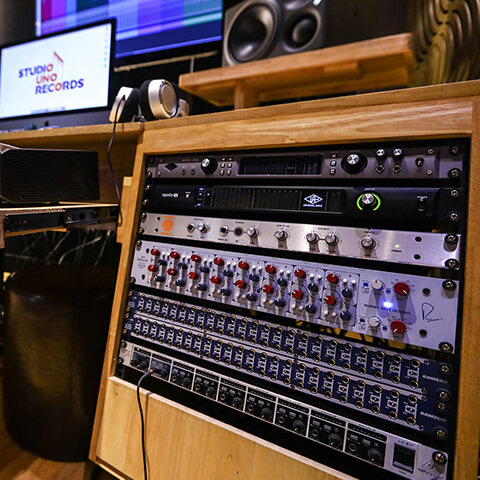Synaesthesia
March 10, 2023
Neumann Kh 310

Confirming its ‘full-range’ status, the published -3dB frequency response limits are given as 34Hz and 21kHz, and the overall response is very well controlled, remaining within a ±2dB tolerance between 36Hz and 20kHz. Returning to the issue of peak loudness, when measured with unmusical pure sine-wave signals, the new KH310A manages 3.5dB more SPL throughout the mid-range and 3.9dB more below 100Hz compared to the O300. This may not sound much, but with normal music material it is claimed to translate into around 7dB more SPL in typical listening conditions — and that really is quite a lot when 3dB represents a doubling of acoustic power! For the head-bangers who still want more, adding the matching (and enormous) KH810 subwoofer removes some of the LF workload from the KH310A, allowing a further 7dB increase in the maximum output level, while also extending the LF response down to 18Hz
Sound
The biggest impression the KH 310s made on me was how they presented low level information. Reverbs in particular were richer and, well, just more audible. One of the first things I did on unboxing them was to open up a mix I’d been working on and immediately wondered what the hell I’d been thinking when I heard the snare reverb. There was just so much! The sense of envelopment this low level detail can introduce was an issue for me in that these are large monitors for nearfield use and using them at very close quarters can encourage you to lean in too close. Being 3 way monitors the distances between drivers is greater than in 2 way designs and there is definitely a minimum distance beyond which the wavefronts haven’t yet had time to sort themselves out. The character definitely changes if you allow yourself to lean it too far.
Unique feature of core 59
monitors may need to be placed in a variety of environments – on their sides , vertically or sometimes even inverted. Core 59’s Orbit baffle rotates too, so you can use it in left, right, or centre-channel orientation. You can even position the woofer above the tweeter/midrange assembly to accommodate placement in front of a console in an LCR array.
Core Sub
Core Sub uses the same DSP engine found in all the Core speakers, which means you can customise its response based on where it’s placed in the room. Its analogue and AES digital inputs let you calibrate it to work in any configuration from single-channel extension through 2.1-channel bass management and on to a theatrical LFE channel with the headroom to really nail it. The offered filters are sufficient and the digital inputs are especially interesting for surround setups.
Recent Posts
Did You Know?
You can visit the studio to have a chat, discuss your upcoming project, or to direct your session. Please email us
- +91 96771 21312
- info@studiounorecords.com
